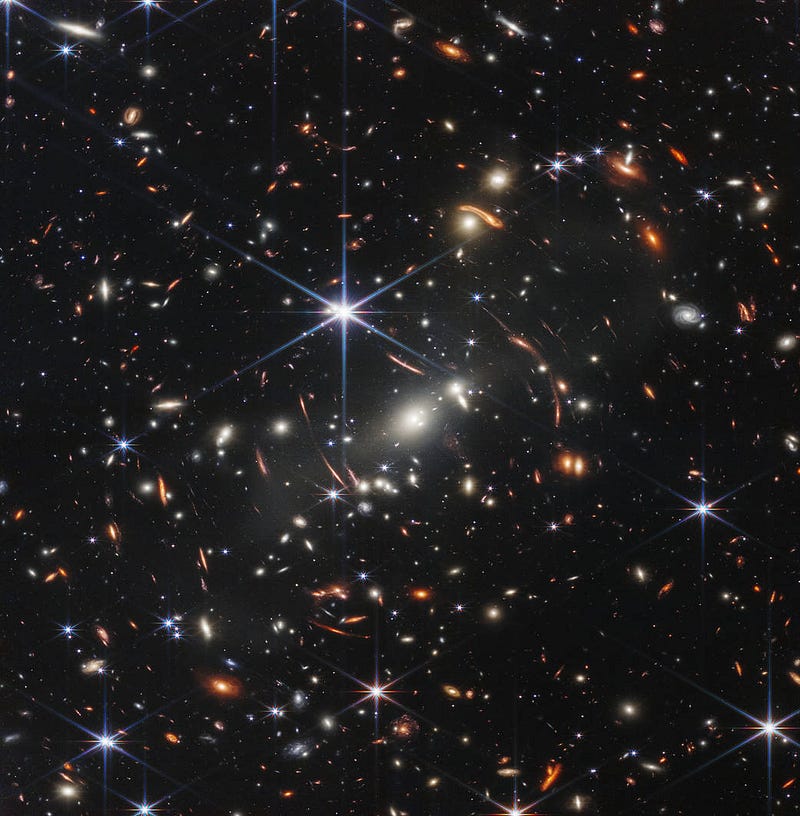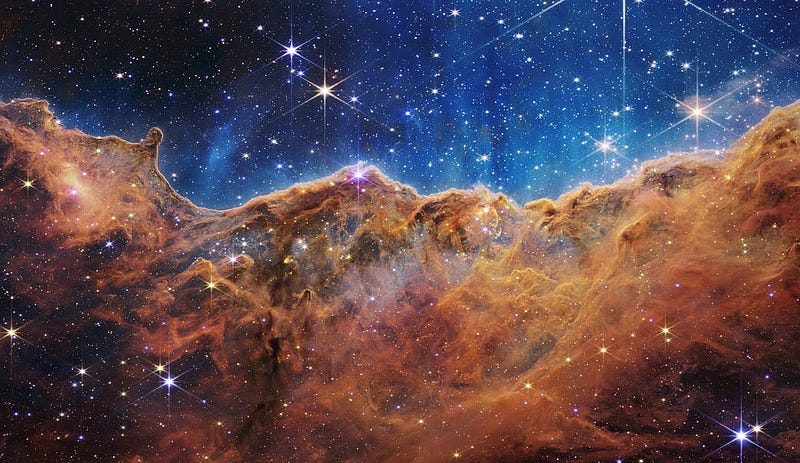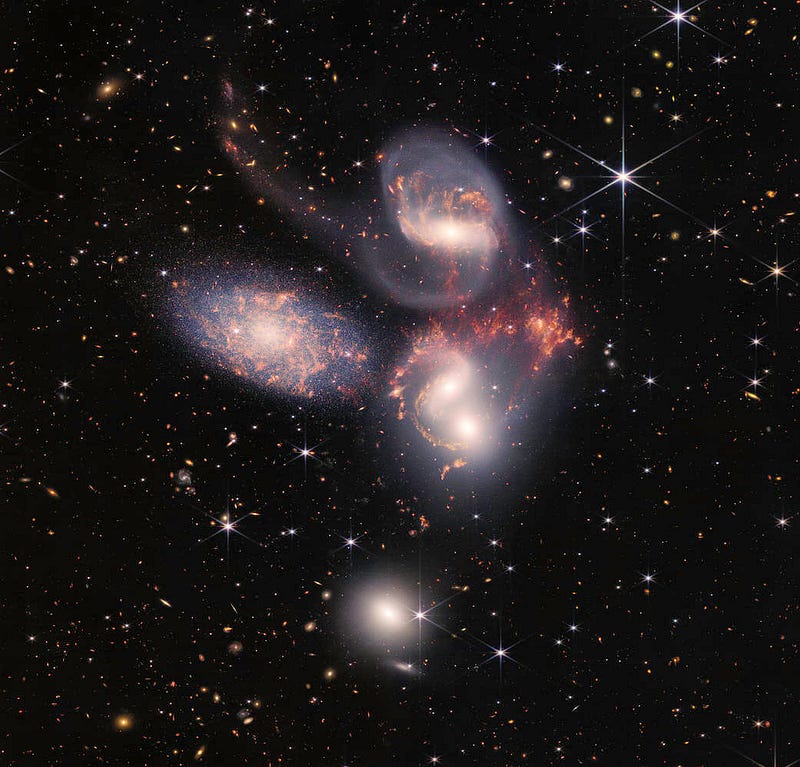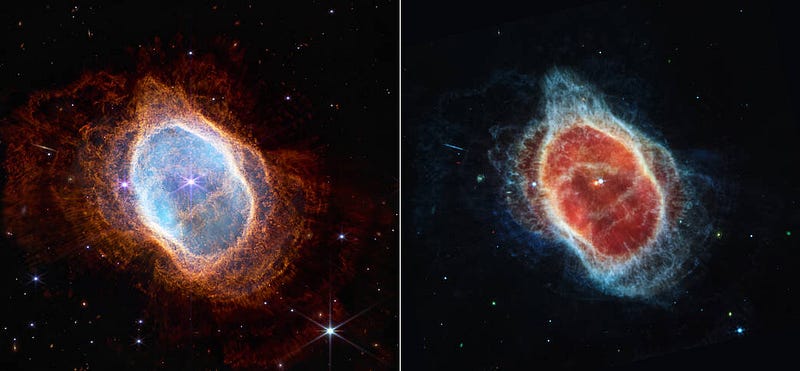James Webb Space Telescope Unveils Breathtaking First Images
Written on
Chapter 1: Introduction to Webb's Stunning Imagery
It has been two weeks since the James Webb Space Telescope unveiled its first full-color images, and they continue to amaze viewers. This section highlights Webb’s recent achievements and what lies ahead.
Webb’s debut deep field image is a groundbreaking achievement in astronomy.
Section 1.1: Webb’s First Deep Field Image

The inaugural full-color image from the Webb telescope was revealed by NASA during a White House event on July 11, 2022, attended by President Joe Biden and Vice President Kamala Harris. This remarkable image represents Webb’s first deep field capture. While the Hubble Space Telescope has produced several deep field images, Webb's achievement stands out as the most profound infrared image of the cosmos.
As illustrated in the image above, Webb's deep field spans a tiny patch of sky comparable to a grain of sand viewed from an extended arm. This incredible photograph reveals thousands of galaxies in an astonishingly compact section of the night sky.
Section 1.2: The Carina Nebula

The image of the Carina Nebula taken by Webb showcases intricate details that were previously obscured. Thanks to its infrared capabilities, Webb can penetrate the dense clouds that hid stars from previous Hubble images.
The clouds depicted in this Carina Nebula image mark the outskirts of a star-forming region. Within these clouds, new stars emerge when gravity causes portions to collapse. The tallest peaks visible in this image soar to an impressive height of 7 light-years.
This video illustrates the stunning details captured in Webb's initial images, highlighting the telescope's groundbreaking capabilities.
Section 1.3: Exploring Stephan’s Quintet

Stephan's Quintet, a striking visual assembly of five galaxies, is depicted in Webb's latest imagery. This new capture reveals gas and dust trails extending far beyond previous estimates, along with the formation of new stars. This image, comprising over 150 million pixels and 1,000 distinct files, is the largest produced by Webb to date, forming a mosaic roughly one-fifth the size of the Moon’s diameter.
Though they appear closely grouped, only four of the five galaxies are near each other, engaging in gravitational interactions. Observing Stephan's Quintet provides astronomers with insights into the fundamental characteristics of galaxies and the processes that trigger new star formation.
Section 1.4: The Southern Ring Nebula

The Southern Ring Nebula represents the remnants of a star nearing the end of its life. Each ring surrounding the central white dwarf consists of material expelled during the star's final moments. A nearby star can also be observed, engaged in orbit around the central star.
Webb captured two images of the Southern Ring Nebula, one using its Near-Infrared Camera (NIRCam) and another with the Mid-Infrared Instrument (MIRI). The MIRI observations reveal several smaller stars obscured by the dust and highlight areas of dust that are too faint to be seen in visible light.
In this video, Dr. Olivia Jones discusses the first stunning images captured by the James Webb Space Telescope, offering insights into their significance.
For more detailed information about the first images from the James Webb Space Telescope, click here.